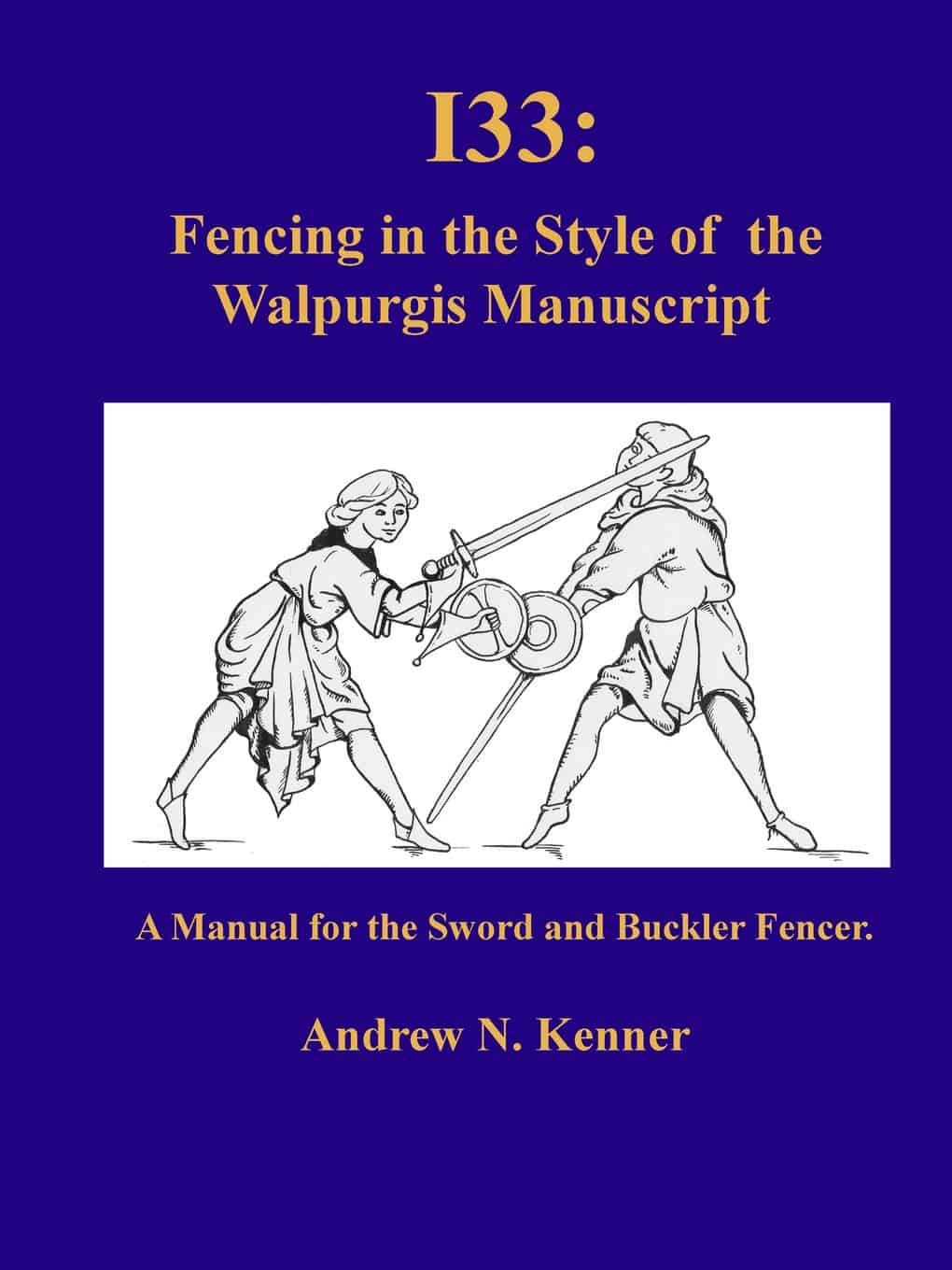A Manual for the Sword and Buckler Fencer 2nd Edition by Andrew N. Kenner
I33 Fencing in the Style of the Walpurgis Manuscript is an interpretation of the the Royal Armories MS.I33. Kenner uses the text to introduce the reader to fighting with the sword and buckler and into the world of western martial arts. Though it is intended for beginners, the limitations of the overall presentation reduce the usefulness to that audience.
Reorganizing topics from the I33
Kenner eschews the organization of the MS.I33 and presents concepts and topics as he sees fit. He admits in the text that these choices are due to his personal tastes.
While not in the form of the source material, the layout chosen is semi-logical. The text proceeds through basic concepts, actions starting from stances where the sword is held above the shoulder, actions from stances where the sword is held below the shoulder, and then grappling and wrestling. The biggest drawback to this format is that it makes it difficult to refer back to the original I33 .
Picture Quality
The pictures in the book are all relevant to the topics. The quality of the pictures is adequate to show what is happening, but not sharp enough to see some of the finer details. The stone wall in the background sometimes makes it difficult to see the orientation of the swords.
The texts only has a few pictures to show most techniques. While the language used in the descriptions is specific, the reader has to refer back to pictures in previous sections to understand the descriptions.
Drills Interpreted from the I33
Each section ends with a list of suggested drills. These are all directly related to the topics covered in the section and generally build from one drill to the next. Instructors may find these of use when developing their own curriculum.
The biggest limitation of these drills is that they frequently require at least two people. These drills are of limited use to anyone studying alone.
Kenner does very well in balancing techniques drawn directly from the MS.I33 with information from other contemporary or later sources and his own observations. In HEMA, there is tension between adhering strictly to the source material and presenting conclusions drawn from experience.
Kenner balances this tension well, focusing on both I33 techniques and his own interpretations. He clearly identifies the source of the techniques he presents and acknowledges when he expands upon the core material.
Safety
Kenner adequartely describes safety equipment in an appendix at the end of the book. While I would prefer this section to be included at the beginning of the main text, it is clearly referenced in the beginning.
Kenner describes the necessary safety equipment in enough detail to allow someone to assemble a personal kit. The book omits mention of any protection advised for the knees and shins. This is presumably due to the style presented by Kenner not targeting the legs. He positions the lower body out of effective range. This omission does not take into account that students learning this style will likely fail to execute all aspects of the style consistently as they learn. This may leave their legs in range, so protection for the lower legs should be included.
At the time of writing this review, the edition of this book is five years old. While the general recommendations for safety equipment are still valid, Saftey equpitment continues to evolve in the HEMA community. This text doesn’t reflect the most current trends and new developments in equipment since it’s publishing.
Left Handed Inclusion
Kenner’s includes a section on left handed fencers. By and large, the western martial arts community deals with left handed practitioners with little more instruction than to do the mirror image of what the right handed practitioners are doing.
While this is not inaccurate, I have encountered very little scholarship dealing with how to adapt techniques for when a left handed sword fighter encounters a right handed sword fighter. While Kenner does not go deeply into this issue, it is refreshing, as a left handed person, to see the issue at least considered.
Conclusions about the I33 Fencing in the Style of the Walpurgis Manuscript
I33 Fencing is a solid resource for anyone looking to learn to use the sword and buckler. Perhaps its best use is by experienced students and instructors looking for an alternate view on how to develop a lesson plan. Kenner also provides context for beginners just getting into western martial arts.

